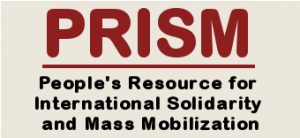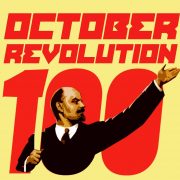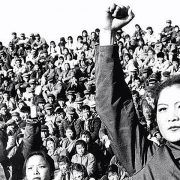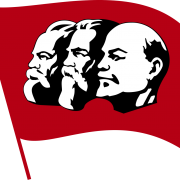Revisionist Betrayal of Socialism in the Soviet Union
Revisionist Betrayal of Socialism in the Soviet Union
By PROF. JOSE MARIA SISON
Editor’s note: This presentation was read as a historical background to Irina Malenko’s book, Sovietica, at the launch of its Dutch version, Gelukkig in de Sovjet Unie, in Amsterdam, on 21 February 2016. Based on articles of the author in the wake of the 1991 collapse of the Soviet Union, the presentation is reposted here as a quick summary of his views on socialism and revisionism in the context of the Russian revolution and counter-revolution.
Introduction
It is to the immeasurably great honor and everlasting glory of Lenin, Stalin and their Bolshevik comrades that the socialist revolution and construction which they carried out from 1917 to 1953 or a total of 36 years could not be totally destroyed by the modern revisionists for more than three decades, from 1956 to the final years of the Soviet Union of 1990 and 1991.
Irina Malenko testifies in her book Sovietica from her birth in Tula, USSR in 1967 to her immigration to The Netherlands in 1990 at the age of 22 she could still enjoy some of the most significant fruits of the revolution, like free education, access to cultural and sports facilities, a high sense of patriotism and mutual care and clear job prospect after graduation from the Institute of History and Archives in Moscow.
But in the year of 1991 the Gorbachov regime completed the work of the modern revisionists in destroying the Soviet Union. It is my task to trace how the modern revisionists subverted in stages and ultimately destroyed socialism in the Soviet Union. First, I must briefly describe socialism as the legacy of Lenin and Stalin.
Socialism as the Legacy of Lenin and Stalin
After Lenin died in 1924, Stalin took the responsibility of carrying forward the socialist revolution and construction. He followed the teachings of Marx, Engels and Lenin on:proletarian dictatorship and mass mobilization, public ownership of the means of production, economic planning, industrialization, collectivization and mechanization of agriculture, full employment and social guarantees, free education at all levels, expanding social services and rising standard of living.
He pursued the line that socialism was possible in one country. He launched the first five-year economic plan in 1929 after the New Economic Policy was terminated. The plan won resounding victory. The Soviet people were jubilant over the establishment of heavy and basic industries. The peasant masses were pleased with the considerable mechanization of agriculture, especially in the form of machine and tractor stations. The standard of living improved significantly.
The jubilation was so high that the 1936 Soviet Constitution proclaimed that there were no more classes and class struggle, except that between the Soviet people and the external enemy. The confiscation of bourgeois and landlord property was interpreted as the disappearance of classes and class struggle, of course by mere economic and legal definition.
Stalin was a proletarian internationalist. He encouraged and supported the communist parties and anti-imperialist movements in capitalist countries and the colonies and semicolonies through the Third International. From 1935 onward, he promoted internationally the antifascist Popular Front policy.
Stalin prepared well against the expected Nazi German invasion of the Soviet Union, which occurred in 1941. He strengthened the Soviet Union economically and militarily as well as politically through patriotic calls to the entire Soviet people. The Soviet people united. Even as they suffered a tremendous death casualty of more than 20 million and devastation of their country, including the destruction of 85 percent of industrial capacity, they played the pivotal role in defeating Nazi Germany and world fascism and paved the way for the rise of several socialist countries in Eastern Europe and Asia and the national liberation movements on an unprecedented scale.
In the aftermath of World War II, Stalin led the economic reconstruction of the Soviet Union. Just as he succeeded in massive industrialization from 1929 to 1941 (only 12 years) before the war, so he did again from 1945 to 1953 (only eight years) but this time with apparently no significant resistance from counterrevolutionaries. In all these years of socialist construction, socialism proved superior to capitalism in all respects.
When Stalin died in 1953, he left a Soviet Union that was a politically, economically, militarily and culturally powerful socialist country. He had successfully united the Soviet people of the various republics and nationalities and had defended the Soviet Union against Nazi Germany. He had rebuilt an industrial economy, with high annual growth rates, with enough homegrown food for the people and the world’s largest production of oil, coal, steel, gold, grain, cotton and so on.
Under his leadership, the Soviet Union had created the biggest number of research scientists, engineers, doctors, artists, writers and so on. In the literary and artistic field, social realism flourished while at the same time the entire cultural heritage of the Soviet Union was cherished.
In foreign policy, Stalin held the U.S. forces of aggression at bay in Europe and Asia, supported the peoples fighting for national liberation and socialism, neutralized what was otherwise the nuclear monopoly of the United States and ceaselessly called for world peace even as the U.S.-led Western alliance waged the Cold War and engaged in provocations.
First Stage of Revisionist Betrayal: The Khrushchov Regime, 1953-64
To become the first secretary of the CPSU and accumulate power in his hands, Khrushchov played off Stalin’s followers against each other . He depended on the new bourgeoisie that had arisen from the bureaucracy and the new intelligentsia. In 1954, he succeeded in reorganizing the CPSU to serve his revisionist ideological and political position. In 1955, he upheld Tito against the memory of Stalin, especially on the issue of revisionism.
In 1956, he delivered before the 20th Party Congress his “secret” speech against Stalin, completely negating him as no better than a bloodthirsty monster and denouncing the “personality cult”. The congress marked the overthrow of the proletarian dictatorship. In 1957, he used the armed forces to defeat the vote for his ouster by the Politburo and thereby made the coup to further consolidate his position.
In 1956, the anti-Stalin diatribe inspired the anticommunist forces in Poland and Hungary to carry out uprisings. The Hungarian uprising was stronger and more violent. Khrushchov ordered the Soviet army to suppress it, chiefly because the Hungarian party leadership sought to rescind its political and military ties with the Soviet Union.
But subsequently, the Khrushchovite ruling clique allowed the satellite regimes in Eastern Europe to adopt capitalist-oriented reforms (private enterprise in agriculture, handicraft and services, dissolution of collective farms even where land reform had been carried out on a narrow scale and, of course, the free market). The revisionist regimes were, however, under strict orders to remain within the Council of Mutual Economic Assistance (CMEA) and the Warsaw Pact.
The unremoulded social-democratic and petty-bourgeois sections of the revisionist ruling parties in Eastern Europe started to kick out genuine communists from positions of leadership in the state and the party under the direction of Khrushchov and under the pressure of anticommunist forces in society. The so-called proletarian ruling parties had actually been mergers of communists and social-democrats.
The total negation of Stalin by Khrushchov was presented as the prerequisite for promoting democracy and civility, rapid economic progress to build the material and technological foundation of communism in twenty years, peaceful social revolution from an exploitative system to a nonexploitative one, detente with the United States, nuclear disarmament step by step and world peace, a world without wars and arms.
Khrushchov used bourgeois populism, declaring the CPSU was a party of the whole people and the Soviet state as a state of the whole people on the anti-Marxist premise that the tasks of proletarian dictatorship had been fulfilled. He used bourgeois pacifism, declaring that it was possible and preferable for mankind to opt for peaceful transition to socialism and peaceful economic competition with the capitalist powers in order to avert the nuclear annihilation of humanity; raising peaceful coexistence from being diplomatic policy to being the general line governing all kinds of external relations of the Soviet Union and the CPSU; and denying the violent nature of imperialism.
In the economic field, he autonomized state enterprises and promoted private agriculture and the free market. The autonomized state enterprises became responsible for their own cost and profit accounting and for raising the wages and bonuses on the basis of the profits of each individual enterprise. The private plots were enlarged and large areas of land (ranging from 50 to 100 hectares) were leased to groups, usually households. Machine and tractor stations were sold to collective farms and agricultural machines were sold even to private entrepreneurs. The free market in agricultural and industrial products and services was promoted.
Khrushchov’s revisionist rhetoric was presented as the “”creative application” of Marxism-Leninism. The socialist system of production and distribution was being breached but could not be dismantled totally. Thus, the Soviet economy under Khrushchov could still register high rates of growth. But the regime boasted of a higher rate of growth in the private sector which benefited from cheap energy, transport, tools,supplies and even stolen products from the public sector.
In the autonomization of state enterprises, managers acquired the power to hire and fire workers, transact business within the Soviet Union and abroad; increase their own salaries, bonuses and other perks at the expense of the workers; lessen the funds available for the development of other parts of the economy; and engage in bureaucratic corruption in dealing with the free market.
Private agriculture was touted as more productive than the state and collective farms. The reemergent rich peasants were praised. But in fact, the corrupt bureaucrats and private farmers and merchants were colluding in underpricing and stealing products (through pilferage and wholesale misdeclaration of goods as defective) from the collective and state farms in order to rechannel these to the free market. In the end, the Soviet Union would suffer sharp reductions in agricultural production and would be importing huge amounts of grain.
The Khrushchov regime drew prestige from the high educational and cultural level of the Soviet Union, the advances of Soviet science and technology, the achievements in space technology and the continuing economic construction. All of these were not possible without the prior work and the accumulated social capital under the leadership of Stalin. Khrushchov went into rapid housing and office construction which pleased the bureaucracy and the people.
The eventual deterioration of Soviet industry and the breakdown of agriculture and bungling in foreign relations led to the removal of Khrushchov in a coup by the Brezhnev clique. Brezhnev became the general secretary of the CPSU and Kosygin became the premier. The former would eventually assume the position of president.
Second Stage of Revisionist Betrayal: The Brezhnev Regime, 1964-82
While Khrushchov was blatantly anti-Stalin, Brezhnev made a limited and partial “rehabilitation” of Stalin. He recentralized the productive ministries and state enterprises previously decentralized by Khrushchov and thus assured the central bureaucracy of revenues and the means to engage in the arms race.
At the same time, the Brezhnev-Kosygin tandem pushed hard Khrushchovite capitalist-oriented reforms. Socialism was converted fully into state monopoly capitalism, with the prevalent corrupt bureaucrats not only increasing their official incomes and perks but taking their loot by colluding with private entrepreneurs and even criminal syndicates in milking the state enterprises. On an ever widening scale, tradeable goods produced by the state enterprises were either underpriced, pilfered or declared defective only to be channeled to the private entrepreneurs for the free market.
Sales and purchase contracts with capitalist firms abroad became a big source of kickbacks for state officials who deposited these in secret bank accounts abroad. There was also a thriving blackmarket in foreign exchange and goods smuggled from the West through Eastern Europe, the Baltic and southern republics.
The corruption of the bureaucrat and private capitalists discredited the revisionist ruling party and regime at various levels. At the end of the Brezhnev regime, an estimated 30 million people were engaged in private enterprise. Among them were family members of state and party officials. Brezhnev family members were closely collaborating with private firms and criminal syndicates in scandalous shady deals.
The state enterprises necessary for assuring funds for the ever expanding central Soviet bureaucracy and for the arms race were recentralized. A military-industrial complex grew rapidly and ate up yearly far more than the conservatively estimated 20 percent of the Soviet budget. The Brezhnev regime was obsessed with attaining military parity with its superpower rival, the United States.
The huge Soviet state that could have generated the surplus income for reinvestment in more efficient and expanded civil production of basic and nonbasic consumer goods, wasted the funds on the importation of the high grade consumer goods for the upper five per cent of the population (the new bourgeoisie), on increasing amounts of imported grain, on the military-industrial complex and the arms race, on the maintenance and equipment of half a million troops in Eastern Europe and on other foreign commitments in the third world.
Brezhnev did better than Khrushchov in showing solidarity and giving effective weapons assistance to the Vietnamese people in their war of national liberation against US imperialism as well as to the peoples of Cuba, Angola and Nicaragua. But the Soviet Union was drawn to a disadvantageus prolonged war in Afghanistan to which it deployed a huge number of Soviet troops and equipment to Afghanistan at the time that the Soviet Union was already clearly in dire economic and financial straits.
Brezhnev introduced to the world the so-called doctrine of “limited sovereignty” and “international proletarian dictatorship” on the occasion of the Soviet invasion of Czechoslovakia in 1968. It was on this occasion that the Soviet Union came to be criticized as social-imperialist, socialism in words and imperialism in deed. Brezhnev also deployed hundreds of thousands of Soviet troops along the Sino-Soviet border. In the 1970s, however, the Soviet Union gave powerful assistance the African national liberation movements and enabled them to defeat colonialism in Africa and weaken the apartheid regime in South Africa in the 1970s.
In trying to keep a tight rein on its satellites in Eastern Europe within the Warsaw Pact, the Soviet Union expended a lot of its own resources and those of its East European partners in maintaining and equipping half a million Soviet troops in Eastern Europe. Before the 1970s, the Soviet Union encouraged capitalist-oriented reforms in its East European satellites but definitely discouraged any attempt by these satellites to leave the Warsaw Pact.
In the early 1970s, the Soviet Union itself wanted to have a detente with the United States, clinch the “most favored nation” (MFN) treatment, gain access to new technology and foreign loans from the United States and the other capitalist countries. However, in 1972, the Brezhnev regime was rebuffed by the Jackson-Vannik amendment, which withheld MFN status from the Soviet Union for “preventing Jewish emigration”. The regime then further encouraged its East European satellites to enter into economic, financial and trade agreements with the capitalist countries.
During most of the 1970s, the revisionist-ruled countries got hooked to Western investments, loans and consumer goods. In the early 1980s, most of them fell into serious economic troubles as a result of the aggravation of domestic economic problems and the difficulties in handling their debt burden. Being responsible for the economic policies and for their bureaucratic corruption, the revisionist ruling parties and regimes became discredited in the eyes of the broad masses of the people.
The Third and Final Stage: The Gorbachov Regime, 1985-91
The Gorbachov regime from 1985 to 1991 marked the third and final stage in the anti-Marxist and antisocialist revisionist counterrevolution to restore capitalism and bourgeois dictatorship. The destruction of the CPSU and the Soviet Union accelerated as the climax of the previous work of Khrushchov and Brezhnev.
Gorbachov engaged in a systematic campaign of deception. He described his regime as being engaged in socialist renewal and at the same time encouraged the forces of capitalist restoration to do their work under the slogans of glasnost and perestroika.
From time to time, Gorbachov paid lip service to Marxism-Leninism and socialism and made frequent protestations that he was a convinced communist. But in his final message as President of the Soviet Union on December 25, 1991, he used the language of the imperialists in the Cold War to describe his principal achievement, as “giving freedom” to the people from “totalitarianism” and “civilizing” what he decried as the “uncivilized” Soviet state and people.
Gorbachov and his clique systematically adopted barefaced anticommunist “advisers” and placed the anticommunists in various key branches of government, the Congress of People’s Deputies, the institutes and mass media in order to churn out a constant stream of anticommunist propaganda.
Gorbachov took the lead in ridiculing the proletarian revolutionary stand as outdated and Marxism-Leninism as having no monopoly of the truth and won the adulation of the officials, ideologues and publicists of the United States and other capitalist countries.
The key idea in the welter of anticommunist propaganda under glasnost was the advocacy of capitalism and bourgeois liberalism. Gorbachov attacked Stalin to be able by implication to attack Lenin, Marxist-Leninist theory and the entire course of Soviet history. But his subalterns explicitly attacked all these in the entire course of the Gorbachov period.
In 1989, he had a new Soviet Congress of People’s Deputies dominated by an anticommunist intelligentsia most of whom were at first formally communists but would eventually declare themselves as excommunists and even anticommunists. The congress included from the very start prominent anticommunists of longstanding.
In early 1990, Gorbachov used the congress to disempower the CPSU and to give him autocratic presidential powers. He used these powers to put the sovereignty of the Soviet Union under question and called for a referendum in early 1991.The popular vote in the referendum was for the retention of the Soviet Union.
But to counter this, he agreed with the nationalist forces in the various republics to make a new “union treaty” whose terms (like having separate armies and currencies, etc.) meant the break up of the Soviet Union. In this period before the alleged coup to save the Soviet Union, Gorbachov announced that it was wrong to stress the role of the proletariat and that he was going to dissolve the CPSU and establish a social-democratic party.
Gorbachov was arrested and detained by his own appointees in an alleged coup against him from August 19 to 22, 1991. Gorbachov and Yeltsin collaborated in using the charade as a pretext for dissolving the entire CPSU and the Soviet Congress of People’s Deputies. The Soviet Constitution and the Soviet Union were still existing and Gorbachov himself had a presidential term extending to 1995 but he decreed the dissolution of the Soviet Union and resigned in favor of a commonwealth of independent states (CIS) still on the planning board.
Perestroika was in fact capitalist restructuring and the disorganization and breakdown of production, despite the avowals of renewing socialism and raising production through better management, a campaign against alcoholism and absenteeism, higher wages and availability of domestic and imported consumer goods, higher profits for the private entrepreneurs, the expansion and retooling of the means of production and the conversion of military enterprises to civilian uses.
The main objective of perestroika was the privatization and marketization of the economy by domestic and foreign investors. One plan after another was adopted and made dependent on foreign direct investments and loans as domestic savings disappeared and the real income of the people was cut down by inflation due to the wanton printing of money by Moscow and the price gouging in the free market.
The most favored among the private businesses were the joint ventures (joint stock companies) with foreign investors and the private cooperatives. Going into joint ventures with foreign investors mainly in the importation of consumer goods and in the repackaging or assembly of these, the high bureaucrats of the ruling party and the state and their family members appropriated for themselves state assets and drew from foreign loans.
The most widespread form of business organization was the private cooperatives of varying scales in industry, agriculture and services. Their operations included the rechanneling of goods and services from the state to the private sector, small and medium private manufacturing and the private export of whatever Soviet goods, including oil and weapons, and the importation of high-grade consumer goods like cars, computers, videorecorders, etc.
From 1988 to 1990, Gorbachov deliberately caused inflation. He increased the money supply by more than 50 percent even as annual production had fallen by only 10 to 20 percent. In 1991, he increased the money supply by more than 100 percent amidst a production fall of more than 20 percent. He also increased the Soviet foreign debt from USD 30 billion at the start of his regime to USD 100 billion at the end in order to finance the importation of consumer goods and the sheer bureaucratic thievery under the cover of the joint ventures.
At this point, I end my presentation. I just wish to say enough to show how the modern revisionists were responsible for destroying the Soviet Union, restoring capitalism completely and causing the economic shambles and social degradation that immediately followed. ###






Leave a Reply
Want to join the discussion?Feel free to contribute!